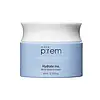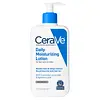What's inside
What's inside
 Key Ingredients
Key Ingredients

 Benefits
Benefits

 Concerns
Concerns

 Ingredients Side-by-side
Ingredients Side-by-side

Water
Skin ConditioningGlycerin
HumectantCyclopentasiloxane
Emollient1,2-Hexanediol
Skin ConditioningCaprylic/Capric Triglyceride
MaskingCetyl Ethylhexanoate
EmollientCyclomethicone
EmollientDimethicone
EmollientGlycereth-26
HumectantMacadamia Integrifolia Seed Oil
Skin ConditioningBrassica Campestris Sterols
EmollientCholesterol
EmollientPEG-5 Rapeseed Sterol
CleansingCyclohexasiloxane
EmollientRubus Arcticus Fruit Extract
AntioxidantOlea Europaea Fruit Oil
MaskingAspalathus Linearis Leaf Extract
Skin ConditioningFoeniculum Vulgare Leaf Extract
HumectantThymus Vulgaris Extract
PerfumingLavandula Angustifolia Oil
MaskingRose Flower Oil
MaskingThermus Thermophillus Ferment
Skin ConditioningRosmarinus Officinalis Leaf Oil
MaskingTheobroma Cacao Extract
Skin ConditioningMelaleuca Alternifolia Leaf Oil
AntioxidantPelargonium Graveolens Flower Oil
MaskingAscophyllum Nodosum Extract
Skin ConditioningLeuconostoc/Radish Root Ferment Filtrate
AntimicrobialHydrogenated Polydecene
EmollientPentylene Glycol
Skin ConditioningCeteth-3
EmulsifyingCeteth-5
EmulsifyingPEG-240/Hdi Copolymer Bis-Decyltetradeceth-20 Ether
StabilisingAmmonium Acryloyldimethyltaurate/Vp Copolymer
Hydrogenated Lecithin
EmulsifyingSodium Hyaluronate
HumectantCaprylyl Glycol
EmollientSorbitan Stearate
EmulsifyingDimethiconol
EmollientGlyceryl Stearate
EmollientPEG-100 Stearate
Panthenol
Skin ConditioningPolyglutamic Acid
Skin ConditioningC12-20 Alkyl Glucoside
EmulsifyingCeramide NP
Skin ConditioningAcrylates/C10-30 Alkyl Acrylate Crosspolymer
Emulsion StabilisingEthylhexylglycerin
Skin ConditioningStearic Acid
CleansingTromethamine
BufferingOleic Acid
EmollientTocopheryl Acetate
AntioxidantDimethicone Crosspolymer
Emulsion StabilisingPolyglyceryl-10 Oleate
Skin ConditioningPropanediol
SolventButylene Glycol
HumectantLecithin
EmollientSodium Dilauramidoglutamide Lysine
HumectantLysolecithin
EmulsifyingPhytosterols
Skin ConditioningDextrin
AbsorbentSodium Ascorbyl Phosphate
AntioxidantDisodium Phosphate
BufferingSodium Phosphate
BufferingPotassium Laurate
EmulsifyingSaccharide Isomerate
HumectantGlyceryl Caprylate
EmollientHyaluronic Acid
HumectantCitric Acid
BufferingHydrolyzed Hyaluronic Acid
HumectantC14-22 Alcohols
Emulsion StabilisingCetearyl Alcohol
EmollientAlcohol
AntimicrobialXanthan Gum
EmulsifyingBHT
AntioxidantDisodium EDTA
Potassium Sorbate
PreservativeParfum
MaskingWater, Glycerin, Cyclopentasiloxane, 1,2-Hexanediol, Caprylic/Capric Triglyceride, Cetyl Ethylhexanoate, Cyclomethicone, Dimethicone, Glycereth-26, Macadamia Integrifolia Seed Oil, Brassica Campestris Sterols, Cholesterol, PEG-5 Rapeseed Sterol, Cyclohexasiloxane, Rubus Arcticus Fruit Extract, Olea Europaea Fruit Oil, Aspalathus Linearis Leaf Extract, Foeniculum Vulgare Leaf Extract, Thymus Vulgaris Extract, Lavandula Angustifolia Oil, Rose Flower Oil, Thermus Thermophillus Ferment, Rosmarinus Officinalis Leaf Oil, Theobroma Cacao Extract, Melaleuca Alternifolia Leaf Oil, Pelargonium Graveolens Flower Oil, Ascophyllum Nodosum Extract, Leuconostoc/Radish Root Ferment Filtrate, Hydrogenated Polydecene, Pentylene Glycol, Ceteth-3, Ceteth-5, PEG-240/Hdi Copolymer Bis-Decyltetradeceth-20 Ether, Ammonium Acryloyldimethyltaurate/Vp Copolymer, Hydrogenated Lecithin, Sodium Hyaluronate, Caprylyl Glycol, Sorbitan Stearate, Dimethiconol, Glyceryl Stearate, PEG-100 Stearate, Panthenol, Polyglutamic Acid, C12-20 Alkyl Glucoside, Ceramide NP, Acrylates/C10-30 Alkyl Acrylate Crosspolymer, Ethylhexylglycerin, Stearic Acid, Tromethamine, Oleic Acid, Tocopheryl Acetate, Dimethicone Crosspolymer, Polyglyceryl-10 Oleate, Propanediol, Butylene Glycol, Lecithin, Sodium Dilauramidoglutamide Lysine, Lysolecithin, Phytosterols, Dextrin, Sodium Ascorbyl Phosphate, Disodium Phosphate, Sodium Phosphate, Potassium Laurate, Saccharide Isomerate, Glyceryl Caprylate, Hyaluronic Acid, Citric Acid, Hydrolyzed Hyaluronic Acid, C14-22 Alcohols, Cetearyl Alcohol, Alcohol, Xanthan Gum, BHT, Disodium EDTA, Potassium Sorbate, Parfum
Water
Skin ConditioningGlycerin
HumectantCaprylic/Capric Triglyceride
MaskingCetearyl Alcohol
EmollientCetyl Alcohol
EmollientPotassium Phosphate
BufferingCeramide NP
Skin ConditioningCeramide AP
Skin ConditioningCeramide EOP
Skin ConditioningCarbomer
Emulsion StabilisingDimethicone
EmollientCeteareth-20
CleansingBehentrimonium Methosulfate
Methylparaben
PreservativeSodium Lauroyl Lactylate
EmulsifyingCholesterol
EmollientDisodium EDTA
Dipotassium Phosphate
BufferingPropylparaben
PreservativeHydrolyzed Hyaluronic Acid
HumectantPhytosphingosine
Skin ConditioningXanthan Gum
EmulsifyingPolysorbate 20
EmulsifyingPolyglyceryl-3 Diisostearate
EmulsifyingWater, Glycerin, Caprylic/Capric Triglyceride, Cetearyl Alcohol, Cetyl Alcohol, Potassium Phosphate, Ceramide NP, Ceramide AP, Ceramide EOP, Carbomer, Dimethicone, Ceteareth-20, Behentrimonium Methosulfate, Methylparaben, Sodium Lauroyl Lactylate, Cholesterol, Disodium EDTA, Dipotassium Phosphate, Propylparaben, Hydrolyzed Hyaluronic Acid, Phytosphingosine, Xanthan Gum, Polysorbate 20, Polyglyceryl-3 Diisostearate
 Reviews
Reviews

Ingredients Explained
These ingredients are found in both products.
Ingredients higher up in an ingredient list are typically present in a larger amount.
This ingredient is an emollient, solvent, and texture enhancer. It is considered a skin-softener by helping the skin prevent moisture loss.
It helps thicken a product's formula and makes it easier to spread by dissolving clumping compounds.
Caprylic Triglyceride is made by combining glycerin with coconut oil, forming a clear liquid.
While there is an assumption Caprylic Triglyceride can clog pores due to it being derived from coconut oil, there is no research supporting this.
Learn more about Caprylic/Capric TriglycerideCeramide NP is a type of ceramide.
Ceramides are intercellular lipids naturally found in our skin that bonds dead skin cells together to create a barrier. They are known for their ability to hold water and thus are a great ingredient for dry skin.
Ceramides are an important building block for our skin barrier. A stronger barrier helps the skin look more firm and hydrated. By bolstering the skin ceramides act as a barrier against irritating ingredients. This can help with inflammation as well.
If you would like to eat ceramides, sweet potatoes contain a small amount.
Read more about other common types of ceramides here:
Ceramide AP
Ceramide EOP
Cetearyl alcohol is a mixture of two fatty alcohols: cetyl alcohol and stearyl alcohol. It is mainly used as an emulsifier. Emulsifiers help prevent the separation of oils and products. Due to its composition, it can also be used to thicken a product or help create foam.
Cetearyl alcohol is an emollient. Emollients help soothe and hydrate the skin by trapping moisture.
Studies show Cetearyl alcohol is non-toxic and non-irritating. The FDA allows products labeled "alcohol-free" to have fatty alcohols.
This ingredient is usually derived from plant oils such as palm, vegetable, or coconut oils. There is debate on whether this ingredient will cause acne.
Due to the fatty acid base, this ingredient may not be Malassezia folliculitis safe.
Learn more about Cetearyl AlcoholCholesterol is a class of organic molecules called lipids. It helps hydrate your skin and is essential to having a healthy skin barrier.
Our skin naturally contains cholesterol in the outermost layer. Besides cholesterol, it also contains ceramides and fatty acids. Cholesterol makes up about 1/4 of your skin's outer layer and barrier. Your skin barrier is responsible for keeping allergens and microbes out. Having a healthy skin barrier is also responsible for keeping your skin firm and plump.
Our bodies use cholestrol to create vitamin D, steroid hormones, and more.
Learn more about CholesterolDimethicone is a type of synthetic silicone created from natural materials such as quartz.
What it does:
Dimethicone comes in different viscosities:
Depending on the viscosity, dimethicone has different properties.
Ingredients lists don't always show which type is used, so we recommend reaching out to the brand if you have questions about the viscosity.
This ingredient is unlikely to cause irritation because it does not get absorbed into skin. However, people with silicone allergies should be careful about using this ingredient.
Note: Dimethicone may contribute to pilling. This is because it is not oil or water soluble, so pilling may occur when layered with products. When mixed with heavy oils in a formula, the outcome is also quite greasy.
Learn more about DimethiconeDisodium EDTA plays a role in making products more stable by aiding other preservatives.
It is a chelating agent, meaning it neutralizes metal ions that may be found in a product.
Disodium EDTA is a salt of edetic acid and is found to be safe in cosmetic ingredients.
Learn more about Disodium EDTAGlycerin is already naturally found in your skin. It helps moisturize and protect your skin.
A study from 2016 found glycerin to be more effective as a humectant than AHAs and hyaluronic acid.
As a humectant, it helps the skin stay hydrated by pulling moisture to your skin. The low molecular weight of glycerin allows it to pull moisture into the deeper layers of your skin.
Hydrated skin improves your skin barrier; Your skin barrier helps protect against irritants and bacteria.
Glycerin has also been found to have antimicrobial and antiviral properties. Due to these properties, glycerin is often used in wound and burn treatments.
In cosmetics, glycerin is usually derived from plants such as soybean or palm. However, it can also be sourced from animals, such as tallow or animal fat.
This ingredient is organic, colorless, odorless, and non-toxic.
Glycerin is the name for this ingredient in American English. British English uses Glycerol/Glycerine.
Learn more about GlycerinHydrolyzed Hyaluronic Acid is a form of hyaluronic acid. It is created by the hydrolysis of hyaluronic acid with a high molecular weight. Once created, Hydrolyzed Hyaluronic Acid has a low molecular weight.
Low molecular weight HA has been shown to hydrate and increase elasticity of the skin. Increasing elasticity is also associated with reduction of wrinkle depth.
One study found topical low molecular weight hyaluronic acid may be considered for the treatment of rosacea in the adult population. However, we always recommend speaking with a professional about your skin concerns.
Hyaluronic acids are a humectant. This means they draw moisture from the air. Hyaluronic acids help moisturize, soothe, and protect the skin.
Read more about other common forms of hyaluronic acid:
Learn more about Hydrolyzed Hyaluronic AcidWater. It's the most common cosmetic ingredient of all. You'll usually see it at the top of ingredient lists, meaning that it makes up the largest part of the product.
So why is it so popular? Water most often acts as a solvent - this means that it helps dissolve other ingredients into the formulation.
You'll also recognize water as that liquid we all need to stay alive. If you see this, drink a glass of water. Stay hydrated!
Learn more about WaterXanthan gum is used as a stabilizer and thickener within cosmetic products. It helps give products a sticky, thick feeling - preventing them from being too runny.
On the technical side of things, xanthan gum is a polysaccharide - a combination consisting of multiple sugar molecules bonded together.
Xanthan gum is a pretty common and great ingredient. It is a natural, non-toxic, non-irritating ingredient that is also commonly used in food products.
Learn more about Xanthan Gum